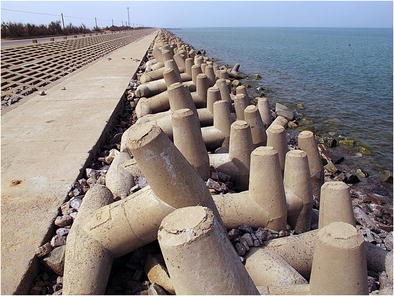Shore Protect Team Fundamentals Explained
Table of ContentsGetting The Shore Protect Team To WorkFascination About Shore Protect TeamIndicators on Shore Protect Team You Should KnowNot known Incorrect Statements About Shore Protect Team Some Of Shore Protect TeamThe Main Principles Of Shore Protect Team Get This Report on Shore Protect Team
Decline in residential or commercial property worth: As the area tourism is impacted by disintegration, so after that is the economic situation. Customers are less likely to look for a beach residence that can be ruined anytime by the impending flooding and erosion emergency. Consequently, residential property worth can drop immensely and affect the entire area.Whether a coastline is simply little and jampacked or needs to close totally for the safety of the environment and close-by residential properties, this significantly affects tourism. Consequently, regional economies are affected (https://www.reddit.com/user/shrprtcttm/). Threat of injury: The enhanced risk of flooding and structural failings triggers an increased danger of injury to nearby travelers and area participants

Shoreline stabilization is straight relevant to their task. Waterside resorts: Since shoreline erosion influences tourist, it influences the success of waterfront resorts.
The Of Shore Protect Team
Coastal business services: No tourists indicates no business. Coastal state parks: State parks that exist along shorelines are at risk of damages.
Soft stabilization is a far better solution for the environment and more sustainable overall. Hard stabilization makes use of synthetic frameworks as defense to manage disintegration. Generally, these structures are installed at ideal angles or parallel to quit sand motion and minimize the force of waves. A lot of kinds of tough stablizing like seawalls and sheet metal are not optimal for coastline stabilization.
The Single Strategy To Use For Shore Protect Team
There's also not nearly enough proof of their efficiency depending on the sort of shoreline and neighborhood conditions. Tough stablizing methods have a tendency to be more tough to mount and don't match the natural aesthetic, protruding like a sore thumb and damaging neighborhood ecosystems in several situations. Beach nutrition is the process of including shed sand and debris back to beaches after disintegration has happened.
TrapBags aid in the process of beach nutrition by securing all-natural environments and enabling plants to expand. They're: Eco friendly: You can use indigenous dirt both to border and to fill up the TrapBags.

The smart Trick of Shore Protect Team That Nobody is Talking About
They can likewise be mounted without any kind of hefty equipment. Cost effective: TrapBags are optimal for both small and large locations of coastline.
Integrated with a high building and construction expense, this has resulted in raising usage of various other soft design coastal administration choices such as coastline replenishment. Seawalls are constructed from numerous products, a lot of generally strengthened concrete, rocks, steel, or gabions. Other feasible construction products consist of vinyl, wood, aluminum, fiberglass composite, and eco-friendly sandbags constructed from hemp and coir. The suitable seawall style counts on location-specific elements, including surrounding erosion procedures. There are 3 main sorts of seawalls: vertical, curved, stepped, and piles (see table below). A report released by the United Nations Atmosphere Programme (UNEP) suggests that the tidal wave of 26 December 2004 caused much less damages in the locations where all-natural obstacles were present, such as mangroves, coral reefs or coastal vegetation.
Natural obstacles, such as coral reefs and mangrove woodlands, stop the spread of tidal waves and the circulation of coastal waters and alleviated the flooding and surge of water. A cost-benefit technique is an efficient way to identify whether a seawall is ideal and whether the benefits deserve the expenditure.
Shore Protect Team for Dummies
A seawall is a static feature which can conflict with the vibrant nature of the coast and hinder the exchange of debris between land and sea. The table below summarizes some positive and adverse results of seawalls which can be used when comparing their performance with various other seaside monitoring choices, such as coastline nutrition. [] Benefits and drawbacks of seawalls according to Short (1999) Advantages Drawbacks Lengthy term solution in contrast to soft coastline nutrients.

This can cause coastlines to dissipate, making them ineffective for beach goers. Normally, seawalls can be a successful way to control seaside erosion, yet just if they are constructed well and out of materials that can stand up to the force of ongoing wave power.
A Biased View of Shore Protect Team
The appropriate seawall style counts on location-specific elements, including surrounding erosion procedures. There are 3 main kinds of seawalls: upright, rounded, stepped, and mounds (see table below). A record released by the United Nations Environment Programme (UNEP) recommends that the tidal wave of 26 December 2004 triggered less damages in the areas where natural barriers were present, such as mangroves, coral reefs or seaside plants.
Natural obstacles, such as reef and mangrove woodlands, stop the spread of tidal waves and the circulation of coastal waters and reduced the flooding and rise of water. A cost-benefit approach is a reliable way to determine whether a seawall is proper and whether the advantages are worth the expenditure.
Not known Details About Shore Protect Team
A seawall is a static feature which can contrast with the dynamic nature of the coastline and hinder the exchange of debris in between land and sea. Benefits and drawbacks of seawalls according to Short (1999) Advantages Drawbacks Lengthy term solution in contrast to soft coastline sustenance.

This can trigger coastlines to dissipate, providing them pointless for coastline goers. Typically, seawalls can be an effective way to control seaside disintegration, yet just if they are built well and out of products that can withstand the pressure of recurring wave power.